Starting from October 2nd, a 10-day festival at five Mumbai restaurants will pay tribute to the sacred temple feasts held at iconic shrines across India
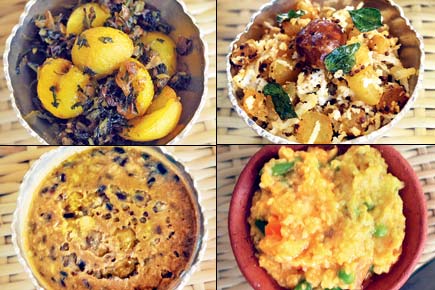
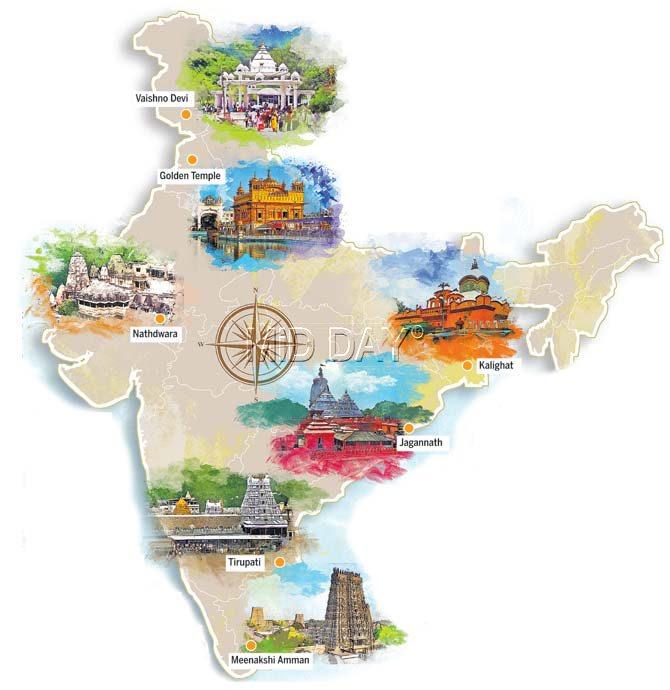 Illustration/ Ravi Jadhav
Illustration/ Ravi Jadhav
A sweet touch
Did you know that the Chhappan Bhog (a feast with 56 varieties) offered to Lord Krishna at the popular Shrinathji Temple at Nathdwara in Rajasthan, features non-spicy, multi-hued dishes to entice the infant form of the resident deity? “The temple uses saffron, sugar, ghee and dry fruits in most of the preparations. The bhog is simple, without any use of spices, and we have not tampered with the recipes,” informs Apurva Panchal, sous chef, The Taj Mahal Palace.
ADVERTISEMENT

Aloo Methi
The festival will be hosted across the five properties in the city. Tuck into Chokki Patta Gobi (cabbage tempered with cumin and turmeric), Arhar Ki Dal (yellow lentil preparation finished with ghee), Kesariya Bhaat (saffron-flavoured rice) and Dabka Kadhi (tempered yoghurt with lentil dumplings). Kurkure Ratalu (crispy fried sweet potato), a popular streetside snack in the temple town, has also made it to the menu.
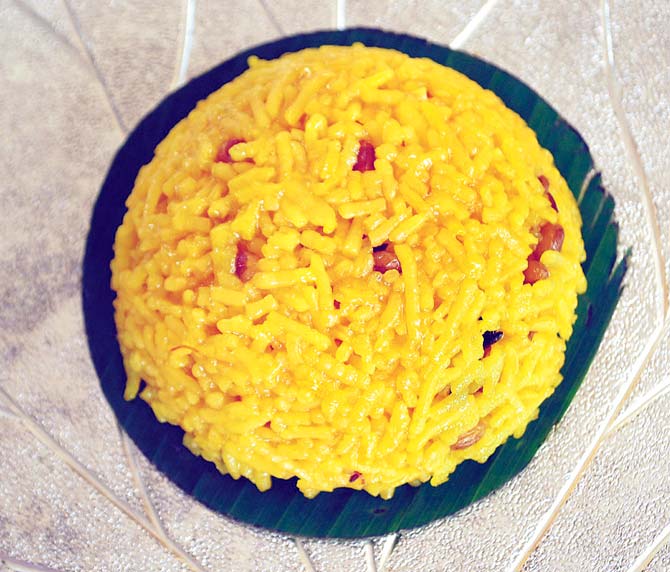
Kesariya Bhaat
Love for langar
Even if you’ve never visited Harmandir Sahib (Golden Temple) in Amritsar, you’d have heard of its famous tradition of serving langar — free, piping hot meals to a sea of devotees who swarm the holy shrine. So, when a group of chefs from the Taj group visited the iconic gurudwara to research for the festival, they participated in making rotis and cutting vegetables at the community kitchen and got to savour the famous Langarwali Dal.

Dabka Kadhi
The mildly-spiced lentil preparation is the star of the temple thali of the North. The feast features over 10 varieties, including home-style Aloo Methi and Mutter Paneer offered at the landmark pilgrim shrine of Vaishno Devi in Jammu And Kashmir. “We’ve also recreated street fare found in the temple neighbourhoods. In Amritsar, it’s Satpura Samosa, a seven-layered samosa with potato stuffing. We’ve done away with the stuffing to create a flaky, layered, savoury pastry to be served as farsan in the thali,” informs Panchal.
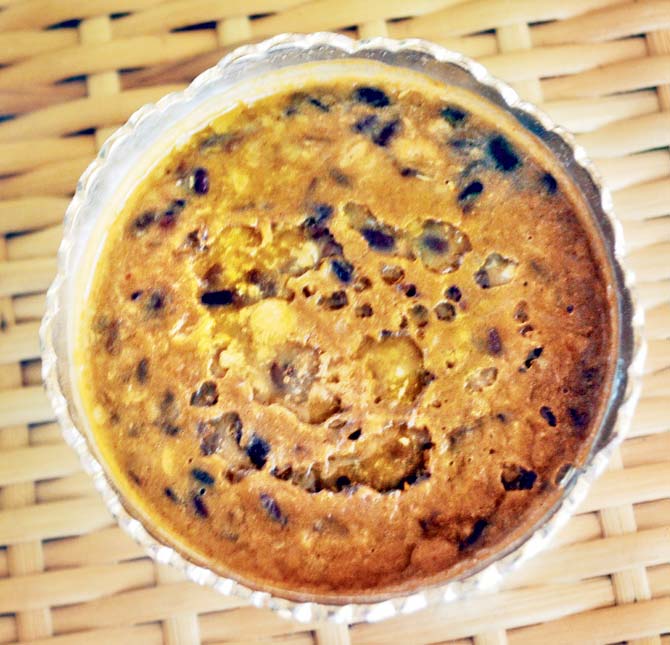
Langarwali Dal
Of red pumpkins and spices
The sacred kitchens at the Tirupati temple in Andhra Pradesh churn out offerings using tons of vegetables, lentils, milk and sugar donated by the devotees who throng to seek blessings of its resident Lord Venkateswara.
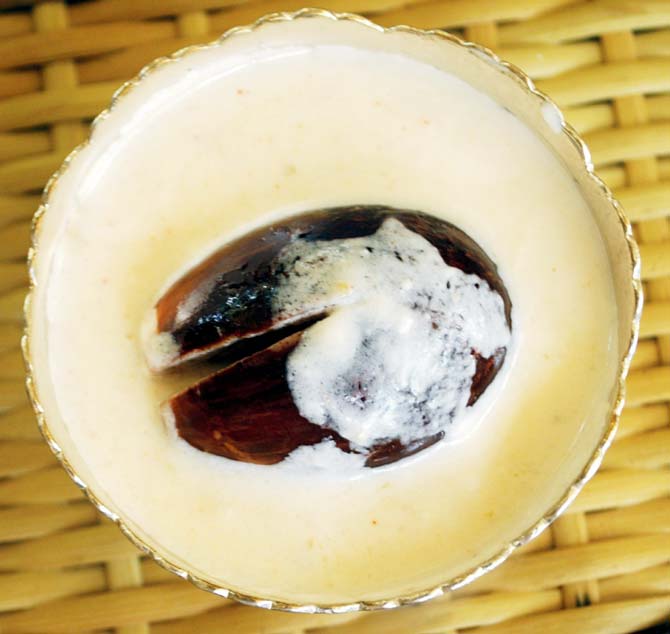 Doi Begun
Doi Begun
Served as prasad to guests, the feast features Milagu Rassam (a concoction of pigeon peas and tomato with hint of black pepper), Arachu Vita Sambar (a traditional Tam-Brahm lentil preparation with drumsticks and stone-ground spices) and Red Pumpkin Poriyal, where the veggie is tossed in freshly grated coconut and tempered with mustard seeds and curry leaf.

Red Pumpkin Poriyal
“Usually, a poriyal is made with beans or carrot, so, it was interesting to see how the temple makes Red Pumpkin Poriyal,” says Panchal, who also replicated the technique of hand-pounding spices in the rassam and sambar. An addition from Meenakshi Amman Temple in Madurai is Urlai Vatthakal (baby potatoes tempered and slow-cooked with homemade spices).

Khichuri Bhog
“The food at this temple is spicier, with more use of potato,” he says. Common to both temples is Pookose Urlai Kurma (cauliflower florets and potato in a light coconut and cashew gravy), Thayir Sadham (curd rice) and Elaneer Payassam (a sweet dish comprising chilled tender coconut and condensed milk). “They use short-grained ponni rice in Thayir Sadham.
We’ve brought that from the South,” says Panchal. The menu also features Vazhapoo vadai (crisp galettes of banana blossoms and lentils), a street snack in the Tirupati temple neighbourhood.
An Oriya-Bengal mix
Apart from its Rath Yatra, the Jagannath temple at Puri in Odisha is also famous for its Mahaprasad that includes Khichuri Bhog — a mix of rice, pulses and vegetables cooked in an earthen pot. “In the temple, pots are stacked on top of each other, over wood fire, and surprisingly, the topmost pot, cooks first. It’s magical, and I still haven’t figured out how that happens,” observes Panchal. For the festival, the chefs will recreate the dish in an earthen pot, using Kolkata’s ubiquitous Gobindo Bhog rice.
However, it will be cooked over charcoal embers. Offerings from Kolkata’s Kalighat temple also appear on the menu. These include Doi Begun (baby brinjals in curd gravy) supposed to be served at room temperature, Chanar Kalia (cottage cheese dumplings in cashew gravy) and an innovative raita that features raddish. Panch phoron, the popular Bengali five-spice mix, is also used in temple feasts in East India.
 Subscribe today by clicking the link and stay updated with the latest news!" Click here!
Subscribe today by clicking the link and stay updated with the latest news!" Click here!







